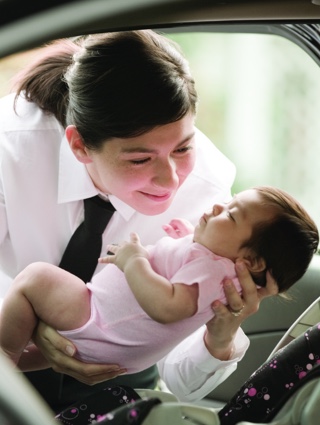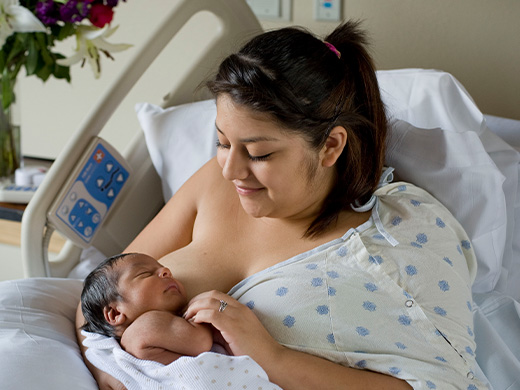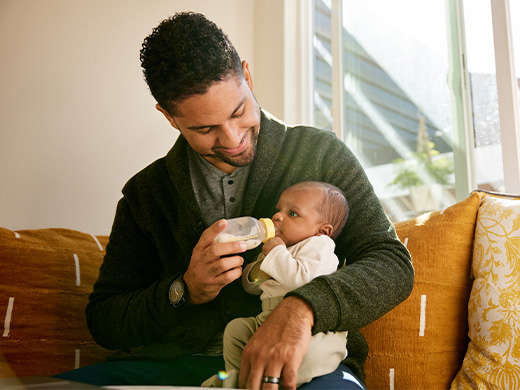When you meet with child care staff or take a tour, make sure they understand your plan for breastfeeding. Talk about ways you can work together to give your baby the healthiest start.
| Ask Your Child Care Providers: |
They Should Say: |
| How often do you feed the babies? |
Babies should be fed when they show early hunger cues, not on a feeding schedule. We will feed your baby when he shows early hunger cues. |
| How do you know when a baby is finished eating? |
The feeding should end when the baby lets go of the nipple or falls asleep, even if there is milk left in the bottle. |
| How do you comfort a crying baby? |
If baby gets fussy, we try lots of ways to soothe him. Babies cry for many reasons. It doesn't always mean they are hungry. We do not automatically give a bottle when the baby is fussy. Sometimes they just need to be held, rocked, or have their diapers changed. We also try taking babies outside when they are fussy. |
| Do you have a way to store pumped breastmilk? |
Yes. We know that breastmilk must be stored in a refrigerator and warmed up before feeding. If we do not have a refrigerator available for you to use, we can keep the breastmilk in a cooler you give us with ice packs. |
| Are you familiar with how to warm breastmilk? |
Of course. We warm up your milk for a few minutes by putting the bag or bottle in a cup or bowl of hot water from the tap. We never use a microwave when warming milk because it can burn the baby, and it hurts the milk's nutritional value. Breastmilk separates and leaves a layer of cream on top, so we gently swirl it to mix it up. And we know to never shake it. |
| Do you have a place where I can breastfeed my baby? |
We have a room or space just for nursing moms. Sometimes mothers want to stay in the baby room to breastfeed and that's OK, too. |
| Have you and the staff had breastfeeding education? |
Yes! We have taken the online course Age-Appropriate Nutrition, Feeding, and Support for Breastfeeding that is available by the Texas A&M AgriLife Extension Service of the Texas A&M University System in cooperation with the Texas Department of Family and Protective Services and Child Care Licensing Division. |




